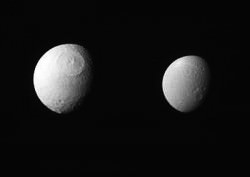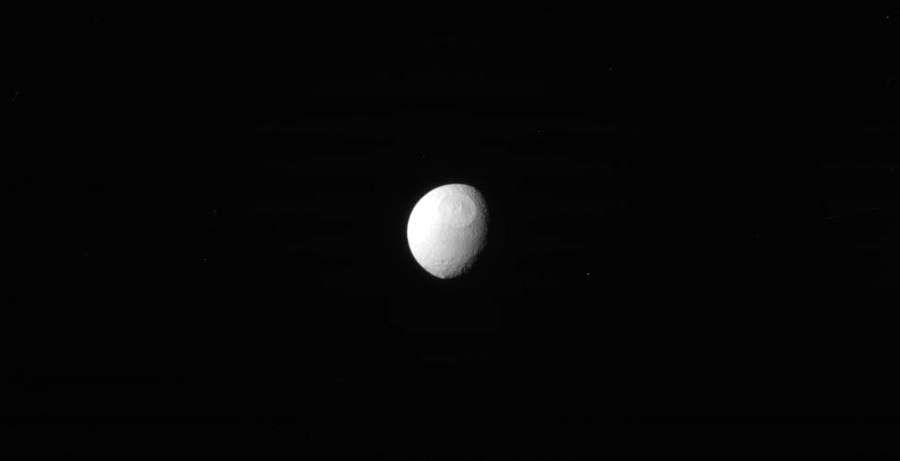[/caption]
Saturn’s moon Tethys passes in front of its slightly larger sister Dione in this animation made from 25 raw images acquired by Cassini on March 14, 2012. Pretty cool! (Click the image to play.)

Tethys and Dione are similar in diameter, being 1,062 kilometers (660 miles) wide and 1,123 kilometers (698 miles) wide, respectively. Both are heavily cratered, ice-rich worlds.
In this view, Tethys’ enormous Odysseus crater can be seen on its northern hemisphere. 400 km (250 miles) across, Odysseus is two-fifths the diameter of Tethys itself, suggesting that it was created early in the moon’s history when it was still partially molten — or else the impact would have shattered the moon apart entirely.
The more extensively-cratered trailing side of Dione is visible here, its signature “wispy lines” rotated out of view. Since it makes sense that a moon’s leading face should be more heavily cratered, it’s thought that Dione has been spun around by an impact event in the distant past.
If you look closely, a slight rotation in Tethys can also be discerned from the first frame to the last.
Credit: NASA/JPL/SSI. Animation by Jason Major.


Agent MaxWAx92 down here happened to remember the rest of the seven sisters, and you witnessed their collective feminine aura also appear near the solar disk on lasco c3 few hours back, and he isn’t taking in any friends any longer, so you see no sun-spots thesedays for the last few years, but you do see few flares resulting in nothing. Agent MaxWain34 turned cannibalistic & you seeing a tornado on the Mars there, and the birds who followed the shadow of the sun appearing in Infra-red images of the planet earth around the equator on planet earth too are disappearing.
Bzzzzz…. we are losing signal…. end of transmission…..
Fantastic!!!!